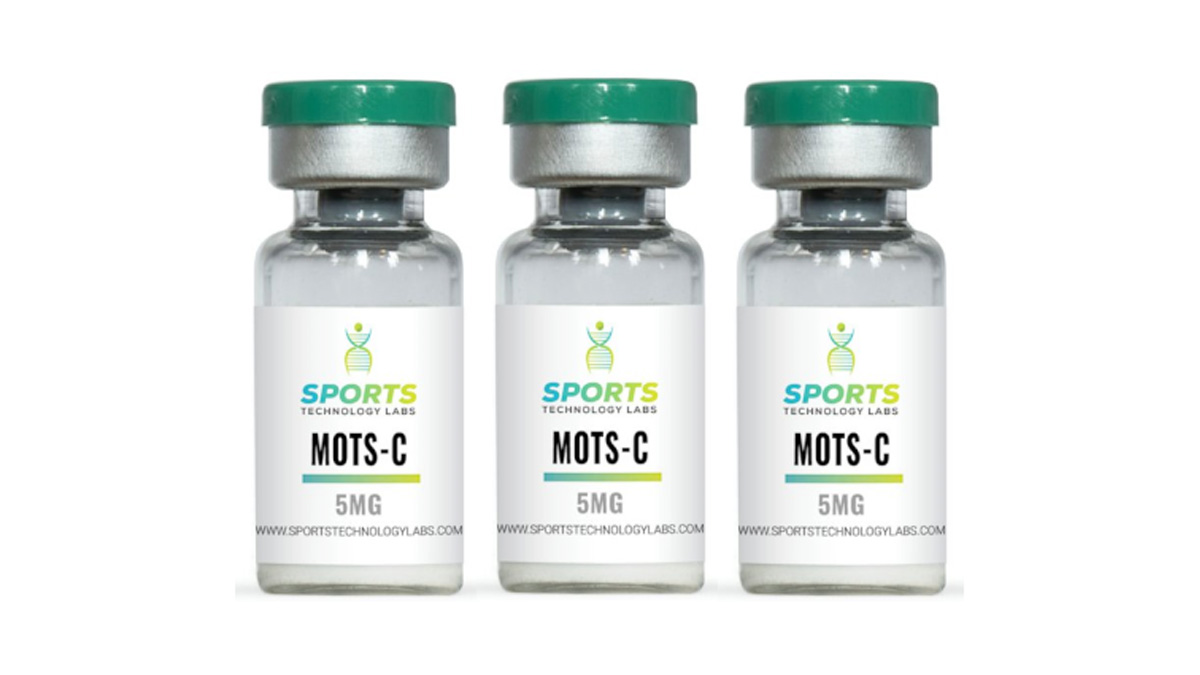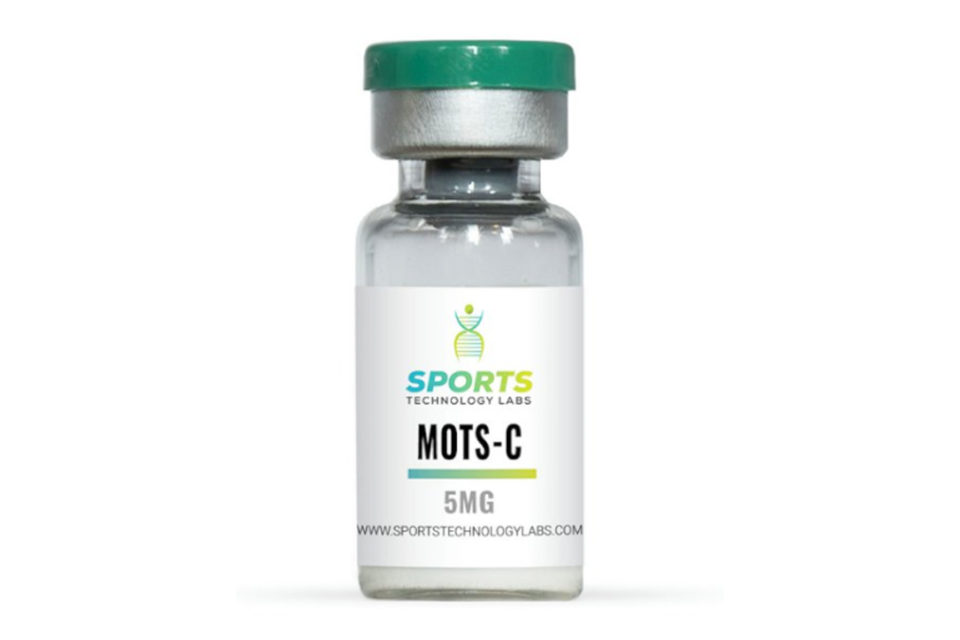MOTS-C is a relatively new compound in the peptide space and has been the subject of growing interest lately for its unique attributes and potential benefits.
As a mitochondrial-derived peptide, it represents a groundbreaking development in the field of cellular metabolism and general energy regulation.
In this review, we’ll dig into MOTS-C, to examine its mechanism of action, purported benefits, clinical research, side effects, how to use it, and much more.
Note: This is a review. Click Here Now to pick up MOTS-C from our top rated source.
What is MOTS-C?
MOTS-C, known officially as Mitochondrial-Derived Peptide C, is a new compound in the peptide research space. Unlike most typical peptides that are encoded in the cell nucleus, MOTS-C is encoded in the mitochondrial DNA.
It’s this difference that highlights the mitochondria’s direct contribution to cellular signaling and systemic regulation, beyond their well-known role as the ‘powerhouse of the cell’.
MOTS-C is a small peptide that’s composed of 16 amino acids, which gives it a profound and far-reaching impact, though its primary functions are in the regulation of basic metabolic processes.1
Since the peptide operates at a cellular level, it’s able to influence how cells utilize and respond to energy sources, glucose and fatty acids in particular.
Holding a substantial regulatory role such as this puts MOTS-C at the cutting edge of metabolic disorder research, as well as research that focuses on obesity and age-related metabolic decline specifically.
The discovery of this peptide has opened countless new doors into the general understanding of mitochondrial function.
Additionally, MOTS-C highlights the intricate and sophisticated balance between the mitochondria and the nucleus, and the incredible level of inter-organelle communication that happens.
This becomes even more interesting when one considers the evolutionary history of mitochondria, which are thought to descend from bacteria that formed symbiotically with eukaryotic cells.
(Special Offer! Click Here Now and subscribe to the Sports Tech Labs newsletter to instantly save 10% on your order!)
How does MOTS-C work?
As you may expect, since MOTS-C is encoded in the mitochondria, the mechanism of action is far more sophisticated than other typical peptides. Understanding how MOTS-C works means diving into the records of its interactions with other metabolic components and signaling pathways on a basic, molecular level.
Central to MOTS-C function is its role in helping to regulate metabolic function, and in particular, how the cells of the body use glucose and fatty acids.
By making the body more sensitive to insulin, MOTS-C forces it to use glucose more efficiently in the cells to provide energy, instead of storing that glucose as adipose tissue, or fat. In short, your body will be burning fat for energy instead of storing it in your mid-section.
Additionally, MOTS-C can influence the AMP-activated protein kinase, or AMPK, pathway, which is a primary regulator of cellular energy homeostasis.
AMPK acts more or less like a master switch for the metabolism, and activates energy-generating processes like glucose uptake and fatty acid oxidation, while simultaneously inhibiting energy-consuming processes, and by modulating the AMPK pathway, MOTS-C helps optimize energy utilization and overall health.
MOTS-C also plays a part in boosting mitochondrial function and biogenesis.
MOTS-C Benefits

Click Here Now to pick up MOTS-C from our top rated source.
With the systemic reach that it seems MOTS-C is able to capitalize on, the potential benefits of MOTS-C are as diverse as they are significant to the fields of health and wellness.
One of the biggest benefits of MOTS-C is the influence it can have on weight management. By enhancing systemic insulin sensitivity and boosting the efficiency of glucose and fatty acid metabolism it can help promote a healthier body composition and BMI.
The direct influence of the AMPK pathway helps the body reduce fat accumulation and promotes the use of fat as an energy source, making it an ideal therapeutic agent for obesity and other related metabolic disorders.
Another potential benefit of MOTS-C is its impact on aging and longevity, by helping to make the mitochondrial function more efficient and helping promote resilience on a cellular level to damaging factors like stress, it can help delay the onset of oxidative stress which also contributes to its anti-aging potential.2
MOTS-C also shows promise in the space of exercise performance and post-activity recovery. The metabolic regulation that it influences can lead to better overall energy utilization, which is absolutely critical for superior physical performance.
Additionally, the peptide’s role in promoting mitochondrial biogenesis can be incredibly beneficial for anyone with an interest in muscle health and endurance, such as athletes, fitness buffs, and those chasing hypertrophy.
Finally, the ability of the peptide to alter glucose metabolism and improve general insulin sensitivity positions it as a potential therapeutic agent for helping to manage type-2 diabetes, helping to promote better glycemic control and general metabolic health.
(Special Offer! Click Here Now and subscribe to the Sports Tech Labs newsletter to instantly save 10% on your order!)
Research Results
One of the biggest areas of research has been focusing on the impact of MOTS-C on metabolism and obesity, with some studies showing that the peptide may have a significant impact on the enhancement of insulin sensitivity and glucose regulation.3 4
In studies using animal models, the administration of MOTS-C led to reduced fat accumulation and improved metabolic profiles, which suggests potential applications in fighting type-2 diabetes and obesity.
In the context of aging, there is research that indicates MOTS-C may have protective effects that can help guard against age-related metabolic decline.5 6
Other studies have shown that MOTS-C promotes mitochondrial biogenesis and improved function, which are both substantial steps toward maintaining better cellular health and improving vitality in aging, and the ability to protect cells from oxidative stress further enhances the potential as an anti-aging therapy.7 8
Finally, there are some indications that MOTS-C is able to help improve muscle function and overall endurance for individuals like athletes and anyone engaging in rigorous physical training.9
How To Use & Dosage
Using MOTS-C effectively is going to depend primarily on understanding the nuances of storage, administration, and dosage.
The administration of MOTS-C is typically done through subcutaneous injections, which ensures immediate, steady absorption into the bloodstream, helping provide optimal efficacy.
Dosage
Finding the appropriate dosage for your particular use case is critical, and can typically be determined after consulting with your preferred healthcare professional, who will take into account the compound itself, as well as individual health status, age, medical history, objectives, and potential tolerance levels.
Typical doses will range from 5 mg to 10 mg, injected anywhere between once and three times per week, while some doses can rise as high as 5 mg/kg of body weight, once per day for up to 4 weeks.
If offered a range of safe dosage amounts, it’s always recommended to start with the lower dosage first and allow some time to observe how your body reacts and acclimates to the administration of the peptide, while also minimizing the possibility of intense side effects.
Once you’re confident in how your body will react to a dose, the dosage can be gradually increased to a level that is both well-tolerated as well as effective.
Potential Side Effects of MOTS-C
MOTS-C is generally considered safe, however, like any therapeutic agent it may have potential side effects, the extent and severity of which will typically vary based on the dosage, individual sensitivity, and usage frequency.
The most commonly reported side effects of MOTS-C use are usually related to the administration method and not the peptide, and include redness, soreness, swelling, or occasional itching at the injection site.
In some cases, users may also experience symptoms like headaches, fatigue, or nausea, due to the changing levels of hormones, but these symptoms are generally mild and resolve or fade as the body becomes acclimated to MOTS-C.
The most important thing to remember is that the research on MOTS-C is still evolving, and this means that comprehensive data on the long-term side effects, safety, and efficacy are not yet established..
(Special Offer! Click Here Now and subscribe to the Sports Tech Labs newsletter to instantly save 10% on your order!)
MOTS-C Review Conclusion
MOTS-C is proving to be one of the more significant peptide advancements in recent history, and it offers a novel approach to metabolic health, aging, and physical performance management.
The unique origin and its role in helping to regulate key metabolic pathways have made it a subject of considerable interest not only in the medical research space but also in the realm of fitness and body composition enthusiasts.
As the research continues to expand, it seems as though MOTS-C holds tremendous potential as a tool for enhancing health and wellness.
Click Here Now to pick up MOTS-C from our top rated source.
References
- Lee C, Kim KH, Cohen P. MOTS-c: A novel mitochondrial-derived peptide regulating muscle and fat metabolism. Free Radic Biol Med. 2016 Nov;100:182-187. doi: 10.1016/j.freeradbiomed.2016.05.015. Epub 2016 May 20. PMID: 27216708; PMCID: PMC5116416.
- Yuan J, Wang M, Pan Y, Liang M, Fu Y, Duan Y, Tang M, Laher I, Li S. The mitochondrial signaling peptide MOTS-c improves myocardial performance during exercise training in rats. Sci Rep. 2021 Oct 11;11(1):20077. doi: 10.1038/s41598-021-99568-3. PMID: 34635713; PMCID: PMC8505603.
- Kim SJ, Miller B, Kumagai H, Yen K, Cohen P. MOTS-c: an equal opportunity insulin sensitizer. J Mol Med (Berl). 2019 Apr;97(4):487-490. doi: 10.1007/s00109-019-01758-0. Epub 2019 Feb 20. PMID: 30788534; PMCID: PMC6462348.
- Gao Y, Wei X, Wei P, Lu H, Zhong L, Tan J, Liu H, Liu Z. MOTS-c Functionally Prevents Metabolic Disorders. Metabolites. 2023 Jan 13;13(1):125. doi: 10.3390/metabo13010125. PMID: 36677050; PMCID: PMC9866798.
- Zheng Y, Wei Z, Wang T. MOTS-c: A promising mitochondrial-derived peptide for therapeutic exploitation. Front Endocrinol (Lausanne). 2023 Jan 25;14:1120533. doi: 10.3389/fendo.2023.1120533. PMID: 36761202; PMCID: PMC9905433.
- Wan W, Zhang L, Lin Y, Rao X, Wang X, Hua F, Ying J. Mitochondria-derived peptide MOTS-c: effects and mechanisms related to stress, metabolism and aging. J Transl Med. 2023 Jan 20;21(1):36. doi: 10.1186/s12967-023-03885-2. PMID: 36670507; PMCID: PMC9854231.
- Reynolds JC, Lai RW, Woodhead JST, Joly JH, Mitchell CJ, Cameron-Smith D, Lu R, Cohen P, Graham NA, Benayoun BA, Merry TL, Lee C. MOTS-c is an exercise-induced mitochondrial-encoded regulator of age-dependent physical decline and muscle homeostasis. Nat Commun. 2021 Jan 20;12(1):470. doi: 10.1038/s41467-020-20790-0. PMID: 33473109; PMCID: PMC7817689.
- Mohtashami Z, Singh MK, Salimiaghdam N, Ozgul M, Kenney MC. MOTS-c, the Most Recent Mitochondrial Derived Peptide in Human Aging and Age-Related Diseases. Int J Mol Sci. 2022 Oct 9;23(19):11991. doi: 10.3390/ijms231911991. PMID: 36233287; PMCID: PMC9570330.
- Zhong P, Peng J, Hu Y, Zhang J, Shen C. Mitochondrial derived peptide MOTS-c prevents the development of heart failure under pressure overload conditions in mice. J Cell Mol Med. 2022 Nov;26(21):5369-5378. doi: 10.1111/jcmm.17551. Epub 2022 Sep 25. PMID: 36156853; PMCID: PMC9639045.
This content was marketed by Brandingbyexperts.com on behalf of their client. For queries reach out support@brandingbyexperts.com
Note – This article is written by Brand Desk
